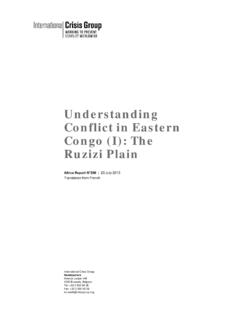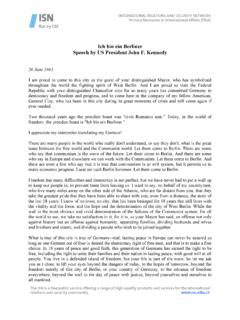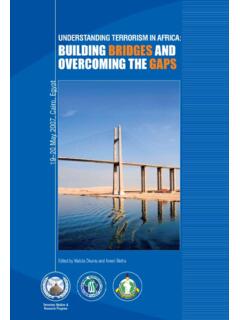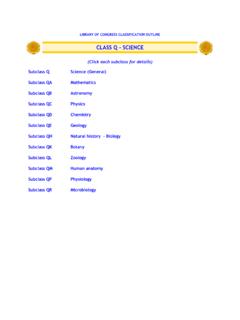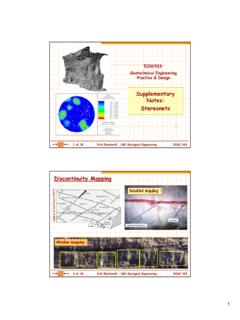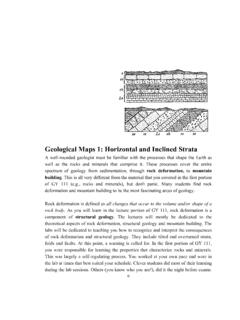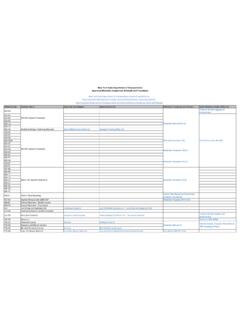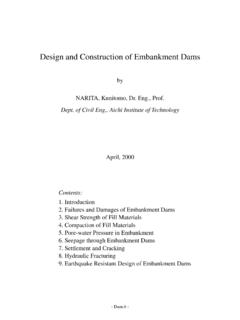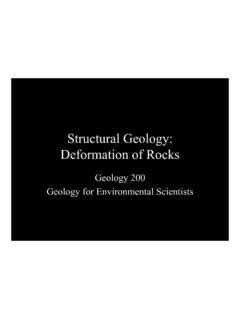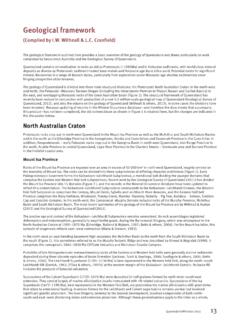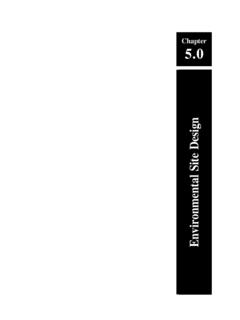Transcription of STRIKE-SLIP AND OBLIQUE-SLIP TECTONICS - ETH Z
1 TECTONICS STRIKE-SLIP faults jpb- 2017 173 STRIKE-SLIP AND OBLIQUE-SLIP TECTONICS Strike slip faulting is a common mode of deformation in both continental and oceanic crust and occurs at a wide range of scales. Strike slip systems are relatively narrow and subvertical wrench zones along which two adjacent blocks move sideways, horizontally, parallel to the strike of the fault zone. For example, they are produced at transform plate boundaries where plates horizontally slide past one another. There is no net addition or subtraction of area to the crust. It is classically accepted that strike slip faulting occurs in a triaxial stress field in which the maximum and minimum principal stresses 1 and 3 lay in the horizontal plane and the intermediate principal stress 2 is vertical. In a trigonometric system, a strike slip fault at an angle 0< <90 to 1 is sinistral; it is dextral if 90< <180.
2 Nearly 45% of plate boundaries have a relative velocity vector markedly oblique (> 22 ) to the boundary normal. 14% of plate boundaries have vectors nearly parallel to boundaries (within 22 ). This implies that STRIKE-SLIP TECTONICS is important, whether alone or as a component. Present-day plate TECTONICS document four main types of STRIKE-SLIP systems: TECTONICS STRIKE-SLIP faults jpb- 2017 174 Conservative plate boundaries Transform fault at oceanic plate boundaries Mid-Atlantic ridge Transform fault at continental plate boundaries Basin and Range Passive margins Bay of Biscay Destructive plate boundaries with oblique convergence Transpression at continental plate boundaries New Zealand, California Constructive plate boundaries with oblique extension Back-arc basins Philippines, the Kuril Archipelago Intra-plate strike slip faults Tectonic escape Asien Transtension Mid-Atlantic ridge In general, the STRIKE-SLIP tectonic regime is characterized by feeble magmatic and metamorphic activity.
3 GEOMETRIC RULES OF STRIKE SLIP FAULTING STRIKE-SLIP fault systems are usually narrower and more continuous than either compression or extension systems. At depth strike slip zones become ductile shear zones characterised by vertical foliation and a horizontal stretching lineation ( the South Armorican Shear Zone). They can be several kilometres wide. Basic terminology STRIKE-SLIP faults are generally vertical faults that accommodate horizontal shear within the crust. The horizontal displacement is either dextral (clockwise), or sinistral (anticlockwise). Symbols in sections are circles, with a point (tip of the arrow) on the block moving towards the observer, and a cross (back-end of the arrow) on the block moving away from the observer. Remember: A fault is sinistral if, to an observer standing on one block and facing the other, the opposite block appears to have been displaced to his left.
4 Conversely, the fault is dextral if the movement is to the right. A scissor fault changes dip and offset sense along strike so that the hanging-wall becomes the footwall. TECTONICS STRIKE-SLIP faults jpb- 2017 175 Tip line; branch line; cut-off line These geometrical features have the same definitions as for other fault types. Tip lines are isolated ends of fault segments. Subsidiary fractures = Riedel shears Strike slip faulting has been abundantly reproduced with analogue experiments. Such experiments have revealed the role of Riedel shears, which are subsidiary shear fractures that propagate a short distance out of the main fault but are coeval with it. Riedel shear is also used on a large-scale fault pattern and may refer to as many as five direction families of associated fractures. In that case, individual fractures remain active after the other types developed so that synchronous movement on all fractures accommodate strain in the fault zone.
5 The geometrical arrangement of Riedel shears is indicative of the sense of movement within the wrench zone and is therefore widely used for the interpretation of its kinematic evolution. - R Riedel shears are normally the first subsidiary fractures to occur and generally build the most prominent set. They develop at an acute angle, typically 10-20 clockwise to a dextral main fault, anticlockwise to a sinistral STRIKE-SLIP fault. They often form an en chelon and overstepping array synthetic to the main fault; they evolve as a sequence of linked displacement surfaces. Their acute angle with the fault points in the direction of the relative sense of movement on the main fault. This angle is equal to 2 , where is the material internal friction angle. - R shears are antithetic faults ( with a sense of displacement opposite to the bulk movement) oriented at a high angle (approximately 75 , ()902 clockwise to a dextral, anticlockwise to a sinistral main fault plane), conjugate with the R(iedel) shears.
6 They preferentially occur in the overlap zone between two parallel R shears and often connect these two R shears. They may develop with or after R shears. - P shears are synthetic minor faults symmetrically oriented to the R shears with respect to the fault plane (at 2 from the fault plane, anticlockwise and clockwise to dextral and sinistral faults, respectively). P shears also form an en chelon array contemporaneous with R shears or later as links between R shears. P-shears are contractional and accommodate fault parallel shortening as shearing proceeds. They are less common as R and R shears and may require more displacement to form. As for R Riedel shears, there may be P shears conjugate with P shears but these have relative minor importance and are difficult to separate, in terms of orientation, from R-shears. TECTONICS STRIKE-SLIP faults jpb- 2017 176 - Y shears are synthetic microfaults sub parallel to the main fault, apparently the last to form.
7 Riedel microfaults may all connect one another to form an anastomosing network of fractures in a narrow fault zone whose bulk borders are parallel to the main fault. Complications are introduced when Riedel-within-Riedel shears form. Strike slip trajectory; Map trace Because slip is horizontal and parallel to the commonly straight fault trace, the kinematics and mechanics of strike slip faulting are well displayed from maps. A perfectly planar STRIKE-SLIP fault causes neither extension nor shortening; consequently there is no associated topography. However, long strike slip faults follow a staircase-like trajectory made up of offset long and a straight trace (vertical equivalent to flats) connected by oblique bends or jogs (vertical equivalent to ramps). The resulting undulation of fault-surfaces is also documented by 3D seismic and remote-sensed data. The wavy shape is attributed to linkage of alternating fault-segments through time.
8 Linkage Strike slip faults are commonly segmented at all scales and levels of exposure, typically in the form of en chelon, non-coplanar faults separated by offsets (or step-overs). These step-over zones of host rock between the end and the beginning of two adjoining en chelon shear fractures deform in order to accommodate continued strike slip displacement. This local deformation may lead to the formation of short fault segments that connect adjacent en chelon fault segments and result in a through-going fault zone. The geometry of these step-over zones and linking faults, in turn, controls contractional or extensional deformation according to the sense of slip and stepping direction of the en chelon fault segments. Left-stepping refers to the arrangement in which one fault segment occurs to the left of the adjacent segment from which it is being viewed. The contrary is right-stepping. Hard-linkage occurs where faults directly link together.
9 Soft-linkage occurs where strained zones without through-going fault link individual fault segments. - Contractional or restraining bends and offsets are local zones of convergence where material is pushed together by the dominant fault movement. The linkage of adjacent fault segments is TECTONICS STRIKE-SLIP faults jpb- 2017 177 typically through the development of P-shear splay faults. At a constant volume of the deforming transpression zone, local shortening will produce vertical lengthening and thus surface uplift. This push-up area will be eroded. - Extensional, releasing or dilatant bends and offsets are local zones of extension where material is pulled apart by the dominant fault movement. The linkage of adjacent fault segments is typically through the development of R-shear splay faults. At a constant volume of the deforming transtension zone, local extension will produce vertical shortening and surface depression.
10 This pull-apart area will be site for sedimentation. A STRIKE-SLIP fault system commonly shows a braided pattern of anastomosing contemporaneous faults. Contractional and extensional bends and offsets can thus alternate along a single yet complex STRIKE-SLIP zone. STRIKE-SLIP duplexes Multiple linking of closely-spaced R- and P-shears may create fault-bound lenses (elongate horses) imbricated between overlapping en chelon segments. Such sets of horizontally stacked and isolated rock lenses are bounded on both sides by parallel segments of the main fault and thus define STRIKE-SLIP duplexes (like thrust or normal-fault duplexes, but tilted to the vertical). They develop in transfer zones, where displacement is conveyed from one fault segment to another in systems of stepped STRIKE-SLIP faults, and in bends, where the orientation of the main fault is deflected. STRIKE-SLIP duplexes may be compressional or extensional, depending on whether they formed at an extensional (facing towards the movement direction) or contractional (facing against the relative movement) bend.

